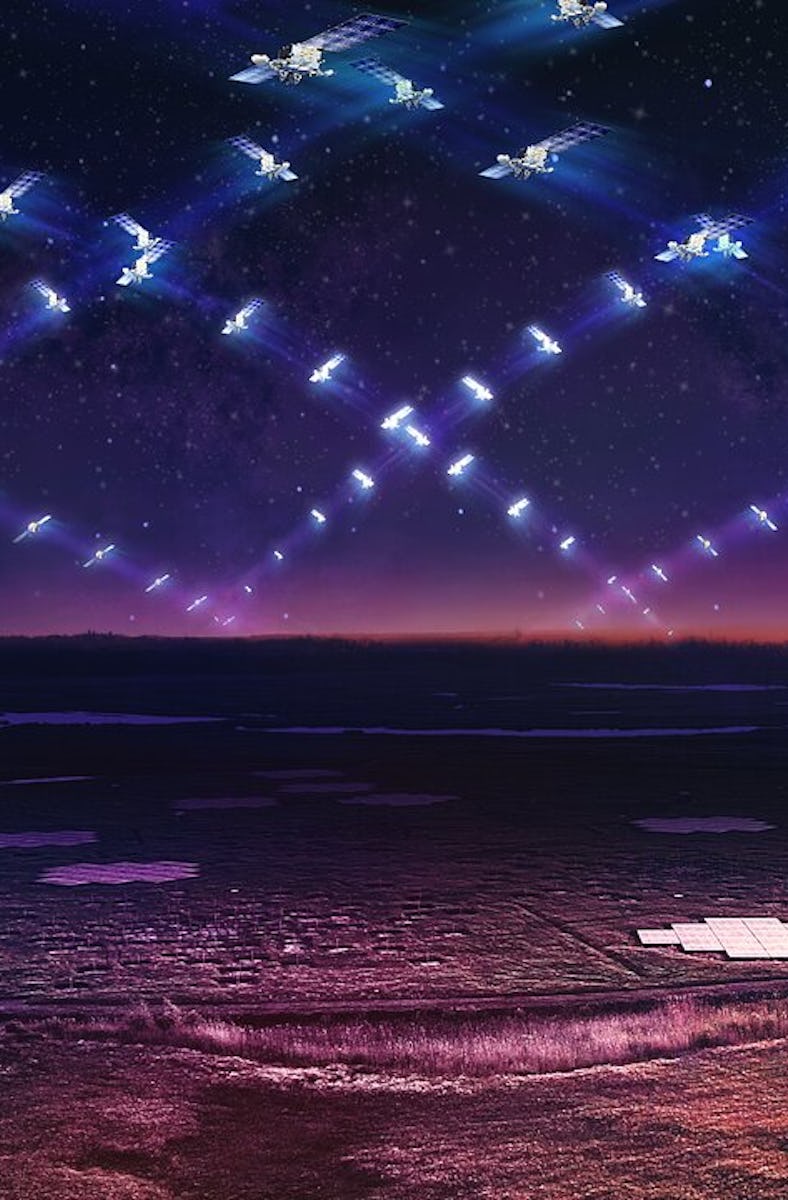Starlink Satellites Are Leaking Radiation — With Consequences for Radio Astronomy
In addition to streaks, SpaceX Starlink satellites might interfere with astronomical observations in another way, new study finds.

A new study provides evidence that SpaceX Starlink satellites are emitting electromagnetic radiation in orbit — and this has the potential to disrupt astronomical observations.
The study, published in the journal Astronomy & Astrophysics, details the findings of the Low Frequency Array (LOFAR) telescope in the Netherlands. When scientists directed LOFAR to observe 68 Starlink communications satellites, they found Starlink radiation that often overlapped with the wavelength band designated for radio astronomy. The authors describe the Starlink radiation as “unintended,” but concerning.
SpaceX has more than 3,000 satellites in orbit currently. The Federal Communications Commission (FCC) recently approved 7,500 satellites for SpaceX’s second Starlink generation, which the company aims to expand into a roughly 30,000 satellite fleet. When numerous satellites are deployed for the same mission, this is called a constellation. Starlink’s size, however, often garners it the title of mega-constellation.
“This study represents the latest effort to better understand satellite constellations’ impact on radio astronomy,” study lead author Federico Di Vruno says in an announcement about the findings.
The badge for the Center for the Protection of the Dark and Quiet Sky from Satellite Constellation Interference (CPS). This division of the International Astronomical Union began in June 2022.
Unintended but present
Radio astronomy tackles space phenomena that do not appear in visible light. “Radio astronomers study emissions from gas giant planets, blasts from the hearts of galaxies, or even precisely ticking signals from a dying star,” according to the National Radio Astronomy Observatory.
Radio astronomers are accustomed to managing interferences, but satellites present a new challenge.
Lead author Di Vruno, who is also the co-director of the International Astronomical Union’s new Center for the Protection of the Dark and Quiet Sky from Satellite Constellation Interference (IAU CPS), focused on Starlink because SpaceX has the largest number of satellites in orbit.
On the ground, radio astronomy equipment is placed in locations where there are regulations, IAU CPS officials say in the organization’s July 5 statement. But there is currently no international regulation on the electromagnetic radiation released by satellites. SpaceX is therefore “not violating any rules,” IAU CPS officials add.
In addition to real-time observations, Di Vruno’s team performed simulations. These suggest that, with growing constellations, there could be disruptions to radio astronomy. Some of the radiation LOFAR detected was within the electromagnetic wavelength band allocated to radio astronomers.
“Our simulations show that the larger the constellation, the more important this effect becomes as the radiation from all the satellites adds up,” study author Benjamin Winkel, based at the Max Planck Institute for Radio Astronomy in Germany, says in the IAU CPS statement.
“This makes us worried not only about the existing constellations but even more about the planned ones — and also about the absence of clear regulation that protects the radio astronomy bands from unintended radiation,” Winkel adds.
A path forward
The study authors are in close contact with SpaceX, according to IAU CPS officials.
“As part of its design iteration, SpaceX has already introduced changes to its next generation of satellites which could mitigate the impact of these unintended emissions on important astronomical projects,” the organization adds.
Starlink satellites have come under scrutiny in the past, for disrupting observations of auroras and creating streaks in ground-based telescopic images.